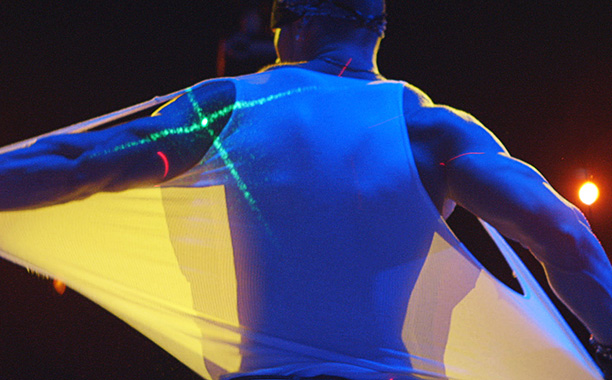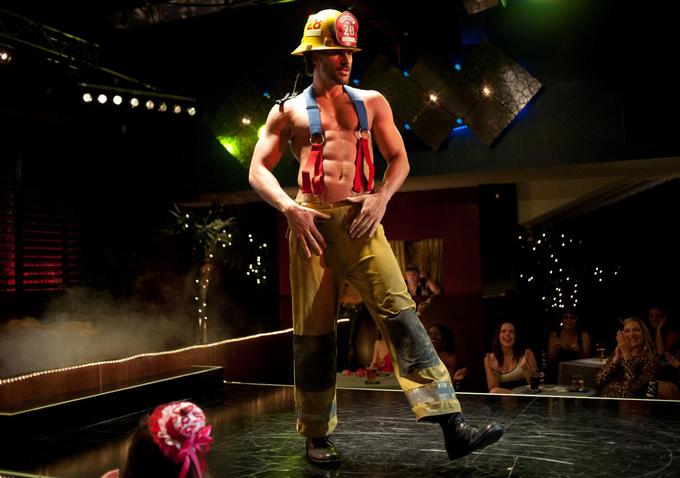Paul N., Here…
La Bare La-Lacks Substance, Fills up on Missed Opportunities.
There are questions that drive humanity to dig deep within in effort to come up with answers. “Why are we here?” “Where did we come from?” “What happens behind the scenes at the world’s most famous male strip club?” Joe Manganiello attempts to answer the latter in his documentary La Bare as he turns the camera on behind the scenes at the world-famous Dallas strip club.
As a whole, documentaries don’t have traditional storylines for the audience to follow. Instead, they move along via smaller, inter-woven La Bare does a decent job of creating a systematic approach with a combination of topics woven together by miniature biographies of some of the club’s most notable dancers. This approach, while well-organized, falters by attempting to do too much overall. The film attempts to cover too many topics, and as a result falls victim to its own formulaic approach. This approach would have worked fine had they kept the number of topics and dancer biographies down. However, the end result is short glimpses behind the curtain that are too short to give any real substance, and too numerous to provide much cohesion. The biographies thus become inconsequential and forgettable. The only real nugget of interest found in the first half of the film was in seeing just how different a male strip club is in format and design from that of its female counterparts. Again, this too was not expanded upon very much.
The film begins with a brief (emphasis on brief) look into the history of how the club was started. This was a fascinating glimpse that, sadly, was over the moment any sort of interest could be obtained; and this is the real recurring fault in the film. Much of the interviews with employees are lacking in anything resembling interesting information or usefulness. It likely comes to no one’s surprise that most of the employees could have never thought they would end up working there; or that it takes hard work and dedication to excel in the profession. The interviews all seem to be conducted at the same camera angle, and with as little forethought with positioning and background as possible. The stock footage used in most of the film is repetitive and monotonous; apparently, there are only so many ways that one can view footage of a stripper dancing.
This isn’t to say that the film falls completely flat. It does try to be more than it is, and that earns it a certain measure of merit. There are a couple of interviews that, had they been expanded, would have made for a much more entertaining film. One such example is the biography of the all-in-one employee, Paulo. His story was an interesting one, and worth a deeper glance. Unfortunately, like the other interviews, his was over before it really developed.
The shining segment of the film occurs with the introduction of fallen La Bare legend Angelo (real name Ruben Riguero). The film rightfully spends a great deal of time reflecting back on the life and tragic death of the club’s most famous dancer. Unlike the rest of the film, this segment really shows the potential heart that resides just below the surface of the film. As fellow dancers reflect with moving emotion on their relationships with Angelo, the film does a superb job with the stock photos and footage, giving the viewer a real sense of just who Angelo really was.
This segment is then followed by the continuation of an earlier biography of long-lasting, current La Bare star, Randy “Master Blaster” as he reflects upon life thus far and what it means to be going forward. In these segments, the camera ceases to remain static (not filming in a corner as it had been for every other interview), and instead follows Randy around as he goes through various minor medical treatments to slow the aging process a little while longer. Ending the film with these two segments was a wonderful decision, ensuring that the audience is left with the lasting memories of the two strongest segments. Unfortunately, like the rest of the film, this too was a missed opportunity. The brilliance of the last two segments only works as a reminder that the rest of the film could have benefited from fewer bland segments and expanded quality segments like these.
2.5 Banana Hammocks out of 5
– Paul Nimon


